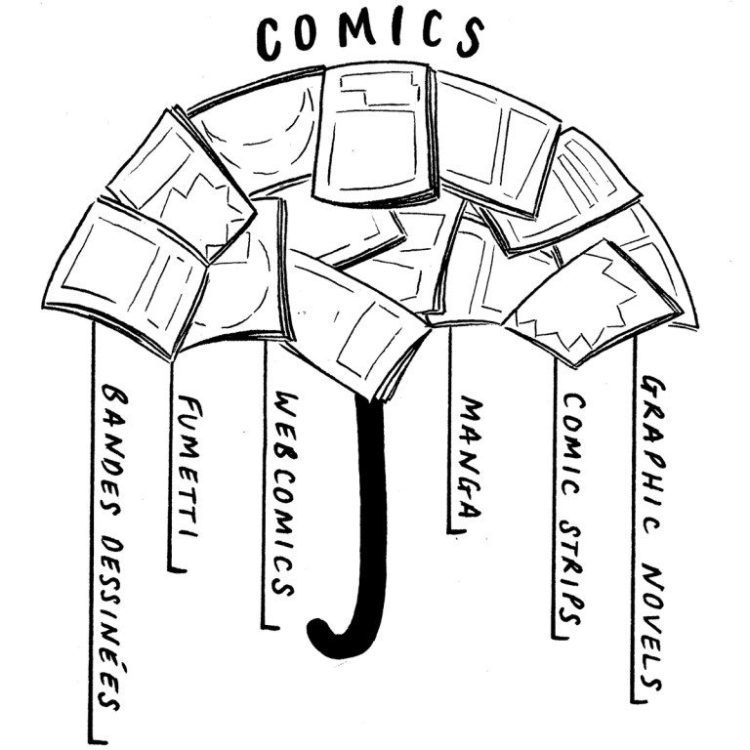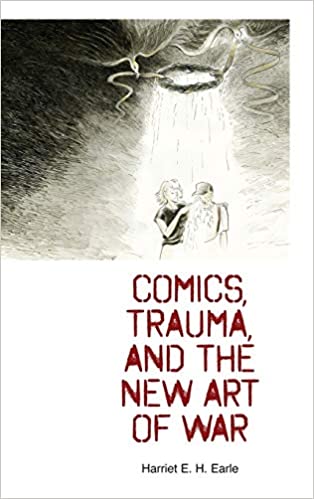People consume comics for different reasons. There are those who enjoy the non-stop action of superhero comics, those who like to escape into a detailed fantasy world, and those who read literal stacks of comics to experience the form in as many ways as possible. Over recent years there has been a growing audience of readers whose desire is to study the comic in the same way that, for decades, people have studied literature and film. This has led to a growth spurt in the publishing of books about comics and the many aspects and themes that comics represent and embrace.
However, everyone has to start somewhere, whether it’s finding your first comic strip as a child or first independent comic book as a teenager, and for those interested in studying comics there isn’t a massive selection of books that can get you comfortably onto the first step. It goes without saying that Scott McCloud’s work is an easy recommendation, but his are not the only books out there. In 2021 there have already been a number of handy guides or introductory books released about comics and one of the best is Comics: An Introduction by Harriet E.H. Earle.
A New Guide
Comics: An Introduction is a small, handy sized, book published by Routledge and boasts a ‘clear and detailed introduction to the Comics form.’ Harriet Earle is a lecturer in English at a UK University and she has written about comics numerous times, often in relation to War and trauma. But in this latest book, she has widened her scope to focus on the history and definitions of the comic format. This is no simple task, as anyone who has studied comics will attest, but Earle manages to simplify the complicated history into bite sized chunks of information and present them in a meaningful way. The book is broken into chapters that feed off each other and create a linear reading out of a complex history of ideas and creative experiments. The growth of comics is very often not linear and different influences occur in different cultures which then seep into other aspects of comics. Earle keeps her focus on the book and holds your attention with straightforward explanations of terms and concepts so that even uninitiated readers won’t get lost in technical terms.

The first half of Comics: An Introduction is a useful exploration of the form, as the titles of the early chapters indicate: Histories, Going global: comics on the world stage, and Cultures and commodities. Earle covers a lot of the ground found in other titles but does so in a more condensed and educational way. This is a sophisticated, well thought out “Comics 101.” Where some books are daunting, especially to readers just getting into Comics Studies, Comics: An Introduction is welcoming and easily digestible. After the broad introduction, the chapters are broken down into short sections for easy reading and later reference. Returning to this book after the first read is a delight because it is so easy to find what you are looking for. If you want to refer to Proto-comics, for example, a quick flick through will allow you to find the short section without having to plough through paragraphs of dense text.
But the book isn’t just a beginners guide to comics. Earle dedicates two chapters to more focused studies of particular kinds of comics. One chapter is on Journalism and the other on autobiographical works. These focused chapters are a gateway to more complex studies and they lean towards Earle’s personal study interests. They are literary heavy chapters reflecting the author’s background, but Earle does not dismiss comics as a whole by focusing only on a few worthy examples, as other writers have done. Instead, the book is inclusive and draws on all aspects of the form. This is clear from the range of topics and themes that are covered across the chapters. There are sections relating to cultural practices, geographical differences, historical significance, and even the audience itself by the way of fans and conventions. In some ways the size of the book is deceiving as Earle packs a massive amount of information into the modest page count.
Conclusion
Where McCloud’s Understanding Comics is a visual dive into the production and mechanics of comics, Comics: An Introduction is more of an academic overview with delightful hints at the possibilities that the form contains. It is an easy and enlightening read aimed more at people starting on their Comics Studies journey, but contains enough gems of information to make it worth reading for anyone in the field. There are more focused books out there, for example Comics Studies: A Guidebook or the new to 2021 Keywords for Comic Studies, each containing essays from a range of scholars and creatives. However, Comics: An Introduction offers a single coherent voice that guides you through the often difficult field of study that is Comics Studies.


